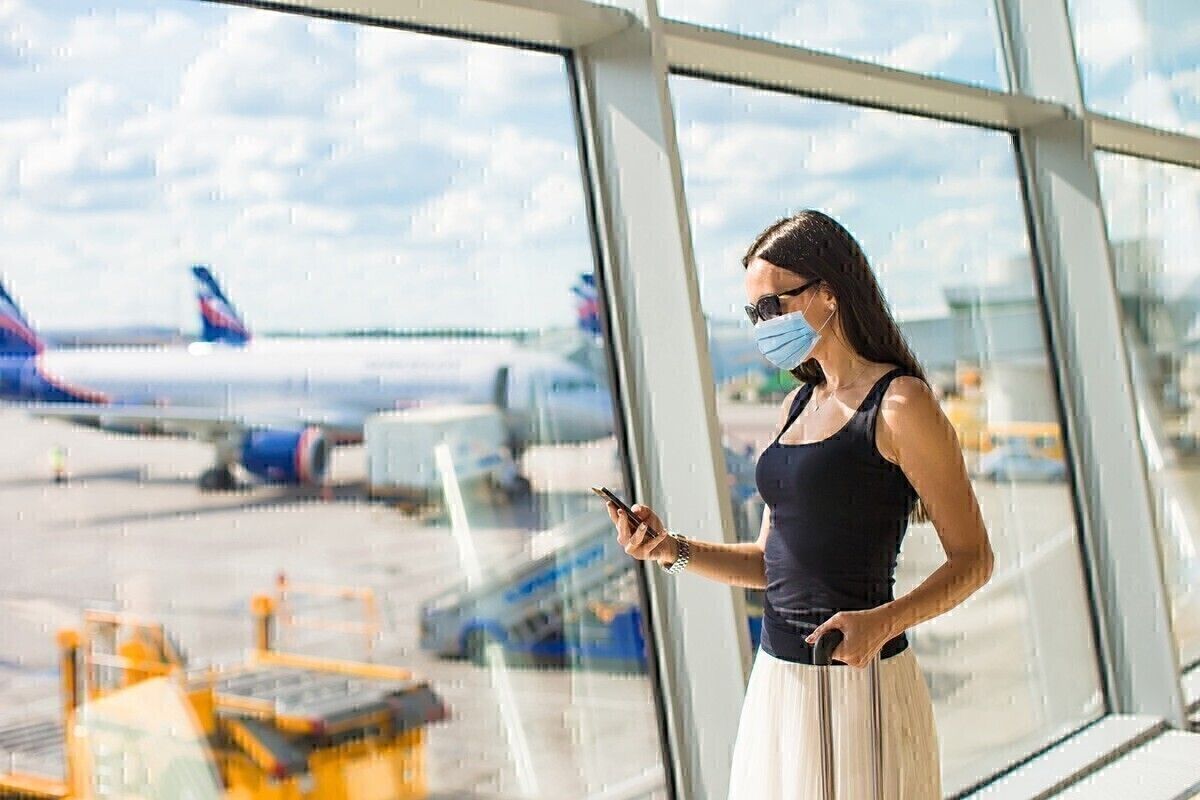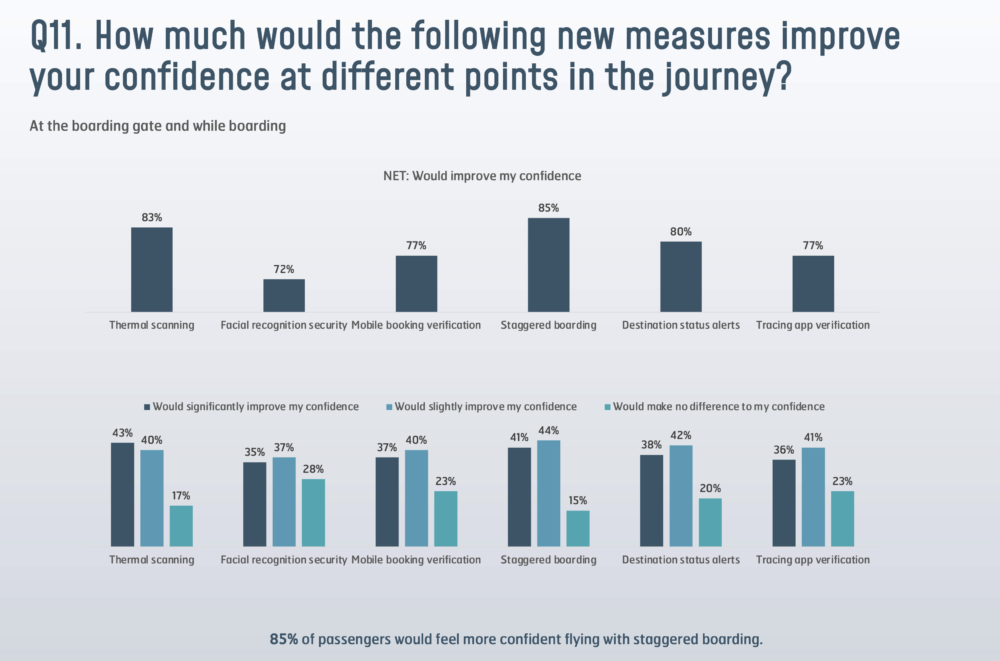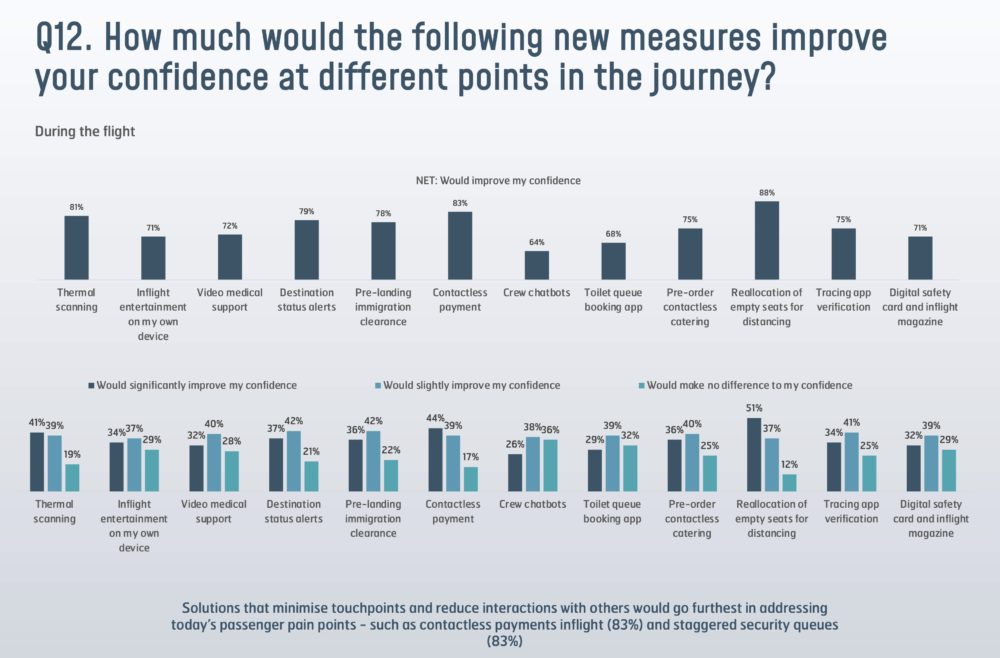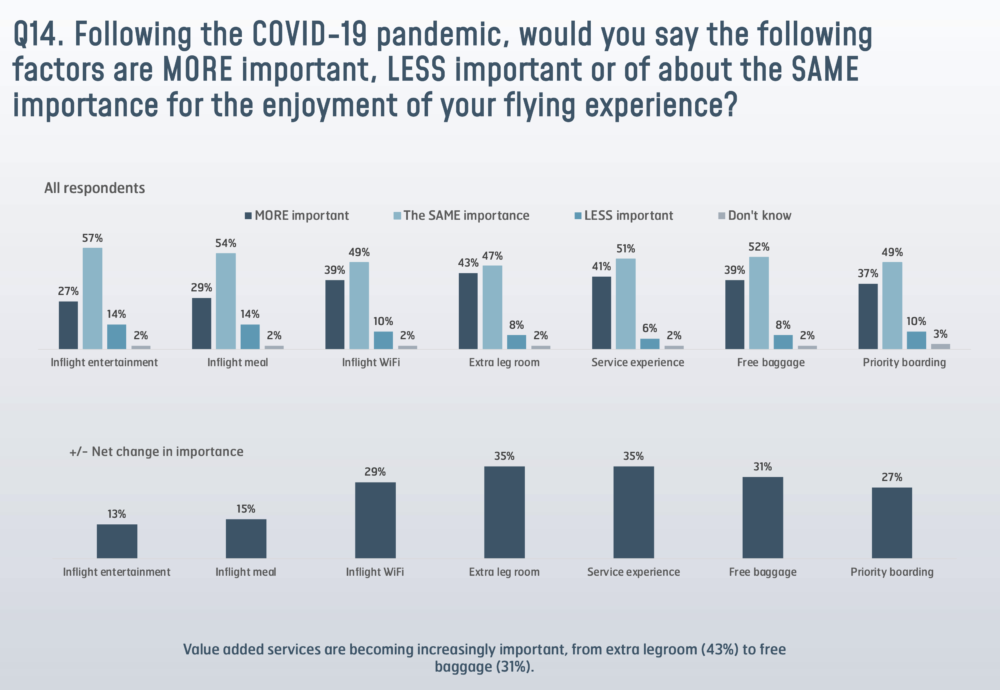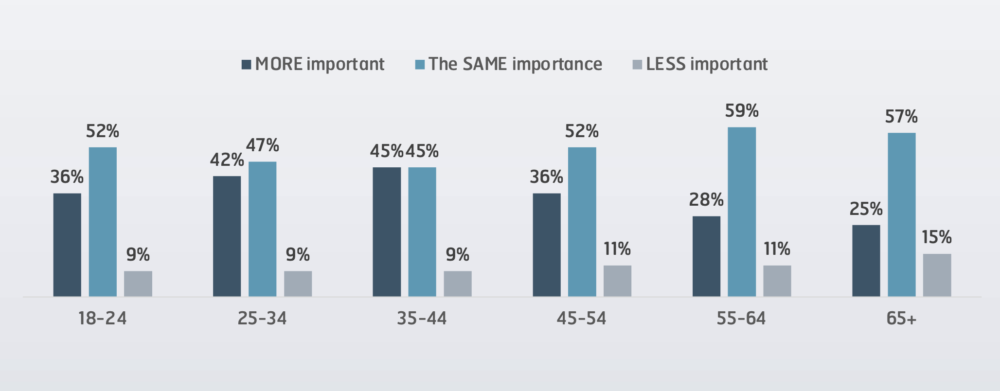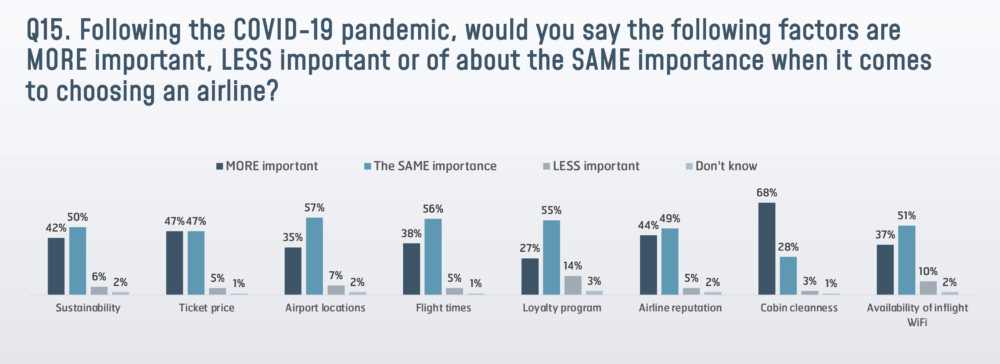Inmarsat’s Passenger Confidence Tracker, published this week, has given us an incredible insight into the minds of today’s passengers. Rebuilding confidence in travel is a key challenge for airlines, and the survey has shown that technology can help. Above all, inflight WiFi is going to be a critical investment for passenger satisfaction.
Understanding today’s passengers
A new study published this week by Inmarsat, the Passenger Confidence Tracker, has taken a dive into the minds of frequent fliers and how they feel about travel right now. It’s freely available to download and provides some valuable insight into how confident air passengers are at the present time.
Taking place in October this year, research firm Yonder collected feedback from almost 10,000 passengers from 12 countries around the world. The participants were selected as people who took at least one flight in the past 18 months. Speaking about the survey, Inmarsat President Philip Balaam said,
“It’s crucial for us to have a deep understanding of today’s passengers and what makes them tick, to help our airline customers stay one step ahead of the curve when it comes to passenger experience. We felt it important to uncover the true impact of the virus on passenger habits, arming the industry with the knowledge to adapt to changing customer needs and, eventually, come back stronger.”
While the survey uncovered a wide range of passenger feelings and trends, one of the key areas involved their perception of technology and digitization of airlines. Let’s take a look at how they responded.
Stay informed: Sign up for our daily aviation news digest.
Improving confidence with technology
Throughout the pandemic, we’ve seen a flurry of technological innovations designed to make traveling safer and passengers more confident. From temperature checks to contactless processes, airlines, airports and tech firms have been working hard and fast to improve the travel experience.
The Passenger Confidence Tracker has highlighted which of these feel the most important to travelers at different stages of their journey. For example, at the boarding gate and whilst boarding the plane, a solid 85% of passengers said they would prefer staggered boarding to take place.
During the pandemic, many airlines have figured out better ways to board passengers. Some have opted for back to front; others have gone row by row. It’s been relatively easy to manage with the current low demand, but with more than eight out of 10 travelers wishing these measures would stay long term, it’s something for airlines to get their heads around.
Aside from thermal scanning, which is something that tends to have mixed results in its current form, the next big thing on the wish list of passengers was destination status alerts. That would be something incredibly easy to provide, perhaps on an information screen at the gate or even through a page on the IFE screen or portal.
During the flight, passengers wished for social distancing where possible, but also voted highly in favor of contactless payment. The destination status alerts scored highly again here, as did pre-clearing immigration at the other end, presumably to avoid queues.
All these wishes are relatively easy to fulfill, but much easier when working with a connected aircraft. So, how important is inflight connectivity going to be in the post-COVID world?
How important is WiFi onboard?
Evidence of usage by fliers during the pandemic has shown that passengers are currently consuming far more data per person than they used to. Even with low load factors on flights, passengers are more data-hungry than ever, likely checking in with friends and family as well as keeping an eye on the news.
Post-COVID, the Passenger Confidence Tracker shows us that more than a third of fliers (39%) believe inflight WiFi will be even more important to ensure an enjoyable flight. Almost half (49%) thought it would be just as important as it was before.
As you might expect, the strongest votes for it increasing in importance came from the younger generations, although not just the very young. In fact, the strongest response was seen from the 35-44 age group, although all groups under 54 had a strongly positive answer.
Interestingly, Inmarsat broke these responses down further into various demographics of passengers, based on their personal situation and travel habits. When we look at this, we can see WiFi onboard is incredibly important to frequent fliers, family mums and business passengers. However, it was even more important to those who had caught the virus and to those who said they would only be traveling in the future with an airline they trust.
Furthermore, a third of passengers said the availability of inflight WiFi would be more important when they were choosing which airline to fly with. That sends a strong message to airlines that investment in technology now is going to ensure their share of the passenger traffic in the future. Inflight WiFi is in high demand.
Do you agree? Is inflight WiFi availability going to be even more important post-COVID? Let us know in the comments.

